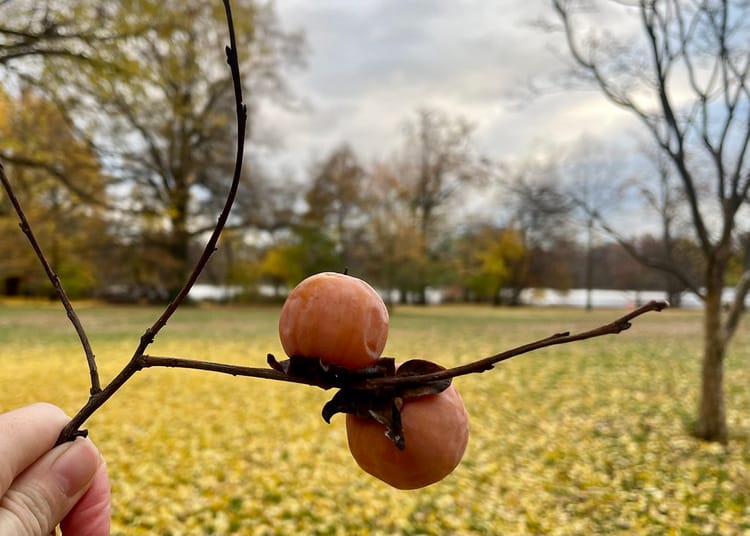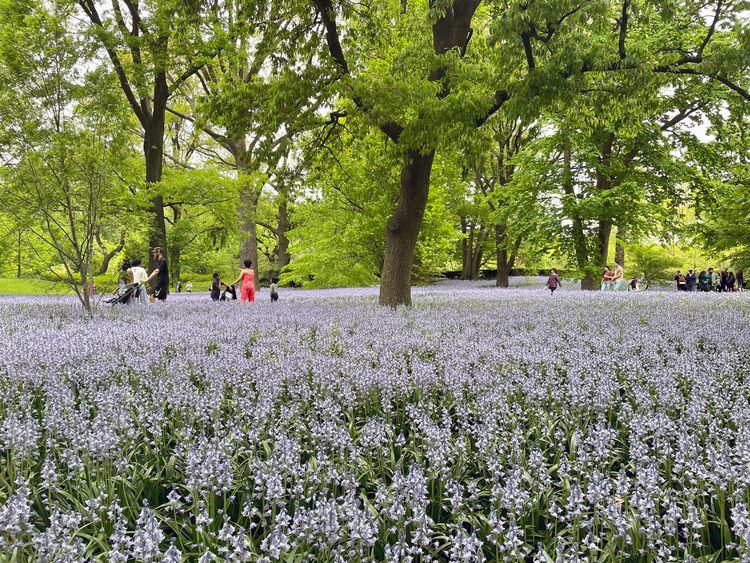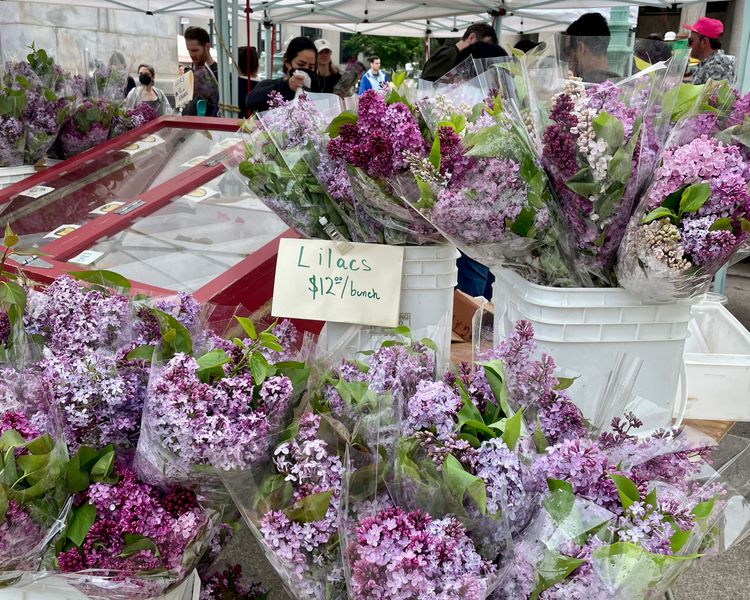The Urban Mulberry Harvest

In community gardens, on sidewalks, and in parks, a great urban harvest is underway for the birds, and those humans who join in the feast. A good way to identify a mulberry tree near you is to look down where their ripe berries have fallen to the street, leaving a purple stain where passersby, unaware of this bounty, have trampled them into the concrete.
Joining the native red mulberry growing throughout the city is the imported white mulberry which has been cultivated in the area since 1774 as part of an attempt to get a silk industry going (silkworms are also fans of the trees). A popular fruit in the Middle East, many of New York’s mulberries were planted in immigrant neighborhoods like Bay Ridge and Bensonhurst. Others seem to have taken root wherever the hardy trees could find space among weeds in an empty lot or on a bridge over a train track.
Some people stand in the street gorging on fruit directly from the trees (although keep in mind that local foraging laws do not condone these actions in New York City parks). A berry that is ready to eat should come off the branch easily; even the small stem that comes with it can be consumed. Maybe take a handful of the soft berries home, give them a thorough wash, and mix them into some ice cream. Savor the sweet taste as they stain your hands with their rich color.

- The curve in Mulberry Street as it goes past Columbus Park was once lined with mulberry trees. Known as Mulberry Bend, it was photographed by Jacob Riis in 1888 as a “Bandit's Roost” long after the mulberries were cut down and before the park was established. One story goes that folk hero Mose Humphrey, an eight-foot-tall firefighter, pulled them up by the roots to attack a rival gang.
- Celebrate summer’s bounty at the Pulitzer Fountain in Manhattan’s Grand Army Plaza: there Pomona, the Roman goddess of fruitful abundance, is depicted in bronze holding a fruit basket atop the multilevel fountain. Sculptor Karl Bitter started the work but was hit by a car and died; his widow chose Isidore Konti to complete it.
- The tune to the nursery room banger “Here We Go Round the Mulberry Bush” dates back at least to the 19th century (and possibly to a women’s prison), but a variant on the melody is used for “The Wheels On the Bus.” NYC was the first American city to use buses for public transit. They soon carved out their turf on our streets—taking over from clanging streetcars in the 1930s, and better serving the interests of big auto, big oil, and big rubber. Today, there are some 6,000 buses traveling through the five boroughs, making up the U.S.’s largest fleet. Hop on one and ride until you spot a mulberry tree. This is your stop. Please exit through the rear doors and enjoy the fruits of summer.




